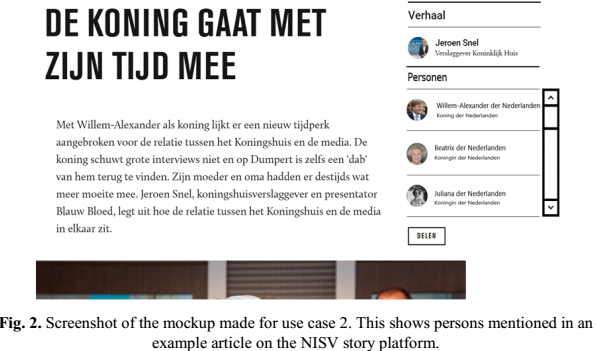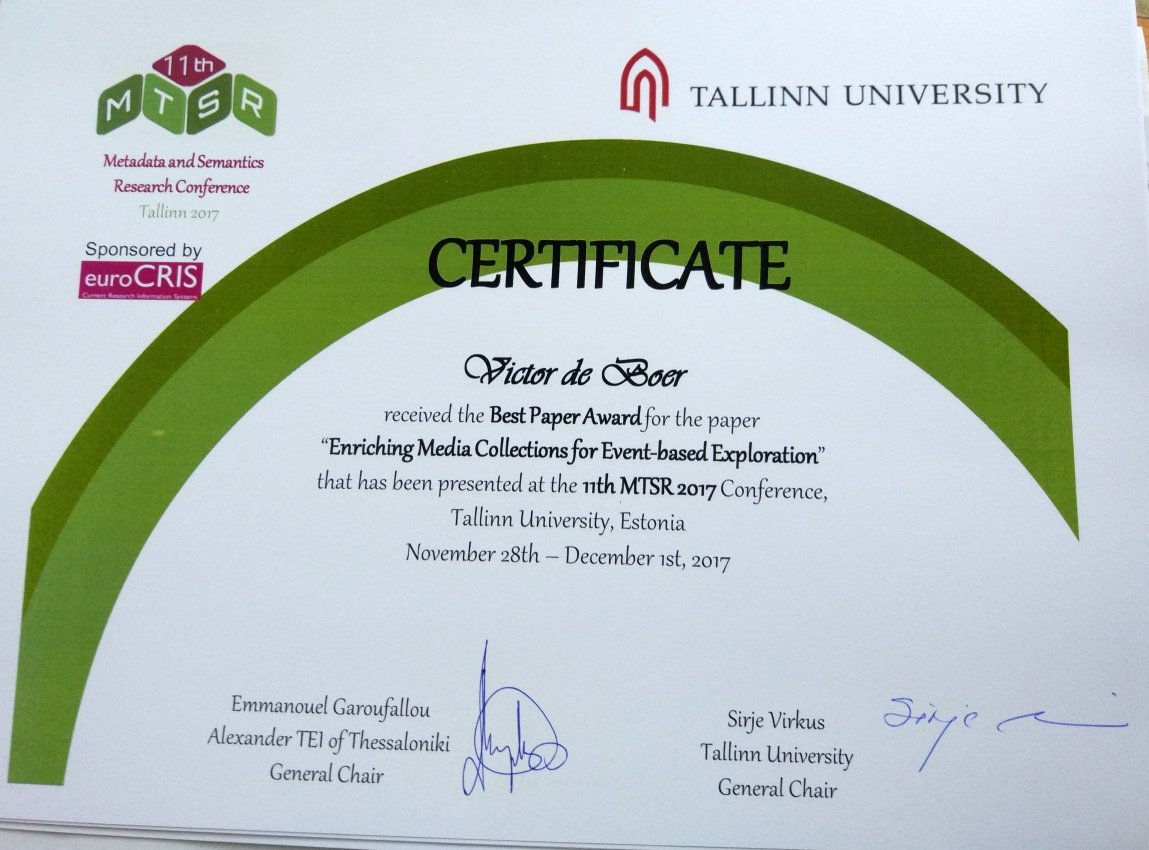At this year’s Metadata and Semantics Research Conference (MTSR2020), I just presented our work on Linked Data Scopes: an ontology to describe data manipulation steps. The paper was co-authored with Ivette Bonestroo, one of our Digital Humanities minor students as well as Rik Hoekstra and Marijn Koolen from KNAW-HUC. The paper builds on earlier work by the latter two co-authors and was conducted in the context of the CLARIAH-plus project.

With the rise of data driven methods in the humanities, it becomes necessary to develop reusable and consistent methodological patterns for dealing with the various data manipulation steps. This increases transparency, replicability of the research. Data scopes present a qualitative framework for such methodological steps. In this work we present a Linked Data model to represent and share Data Scopes. The model consists of a central Data scope element, with linked elements for data Selection, Linking, Modeling, Normalisation and Classification. We validate the model by representing the data scope for 24 articles from two domains: Humanities and Social Science.
The ontology can be accessed at http://biktorrr.github.io/datascope/ .
You can do live sparql queries on the extracted examples as instances of this ontology at https://semanticweb.cs.vu.nl/test/query
You can watch a pre-recorded video of my presentation below. Or you can check out the slides here [pdf]




